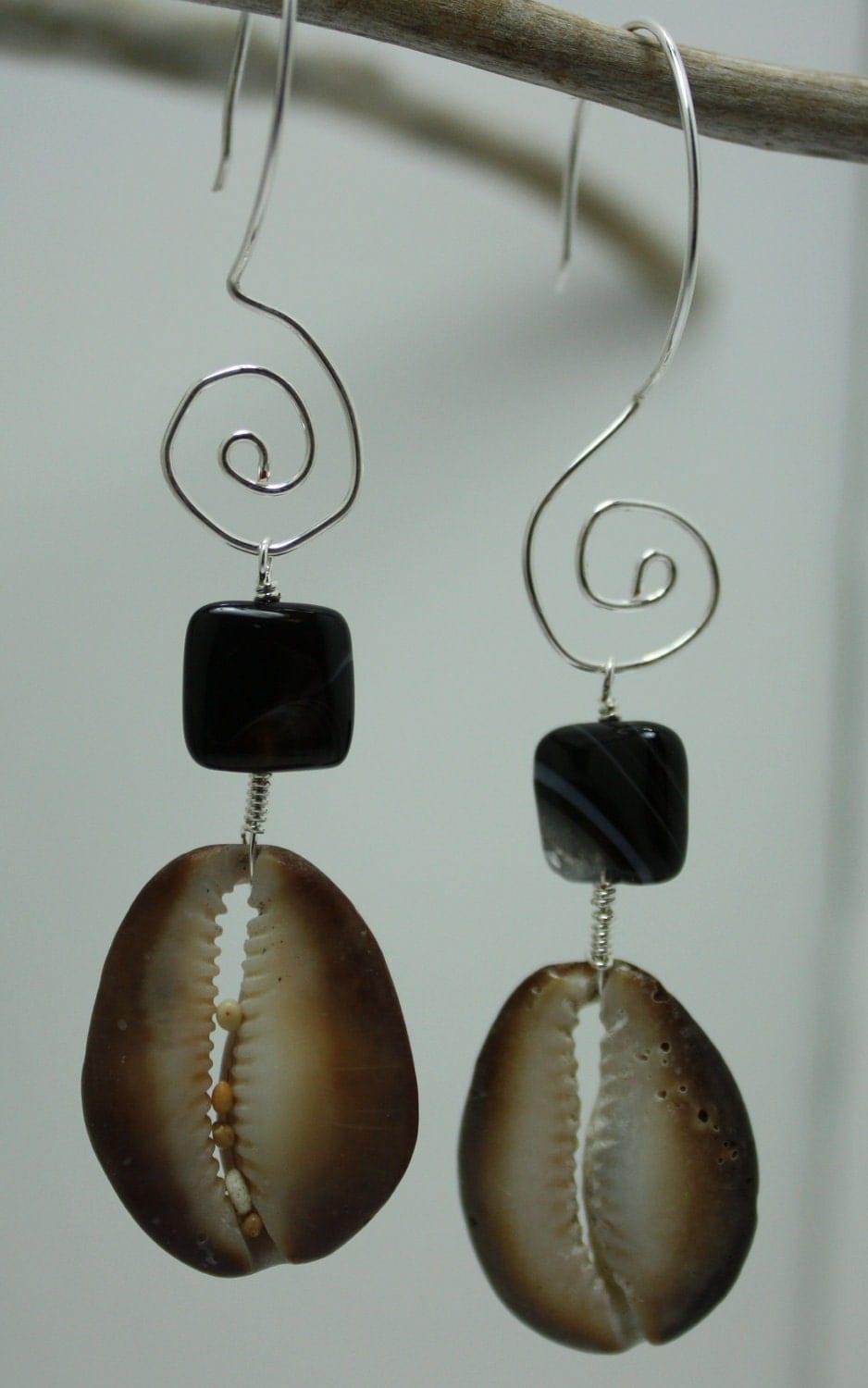This is not to say that I'm troubled by the concept. The original notion of the yoni is part of tantric sex practice, as I've been writing about for one of my copywriting customers: basically, "yoni" is Sanskrit for "divine passage," and it refers to the vagina/vulva as a sacred temple. The penis gets a similar reverence as lingam. All well and good. Sex is sacred and beautiful.

It's hard to post even the very lovely examples of yoni jewelry in a post like this, so here are some cowrie shell earrings from D Rae Designs.
I think the problem comes in when women (and men) who have little interest in the Tantra adopt the idea of venerating the yoni. The thing is, once you're worshiping something in a vacuum, you automatically mentally remove it from the realm of everyday practice. To decide that we are now going to revere the vagina as sacred rather than thinking of it as dirty turns the vagina into a concept that is beyond the woman.
If my vagina is sacred, it doesn't belong to me. Sacredness implies worshippers, implies a social construction and concept that is larger than myself. I don't want to think of a part of my body as filthy, as shameful. But I also don't want to think of it as bigger and more sacred than the rest of me.
I'm all for resisting the idea of shame, but replacing it with the idea of sacredness, without understanding the yoni concept as part of a whole person, doesn't grant a woman control of, ownership of, and pride in her sexuality. It only estranges the woman from her sexuality in the opposite direction.
So all that polymer clay yoni jewelry on Etsy (some of which, admittedly, is lovely)? When I look at most of it, all I can see is a woman desperately resisting the idea that sex is dirty ... by putting it away from herself and her life entirely, promoting it as a passage to the sacred experience rather than a part of herself, her sexuality, her pleasure. How is this different from the Victorian narrative? How is this helping anyone?
No comments:
Post a Comment